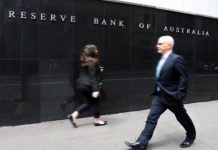With supply chains disrupted since February, countries hit one after the other and businesses closed in many leading economies, it is not a question of if, but a matter of how bad and how long the coronavirus-induced recession will be. The global demand shock will certainly be harder than the post 2008 period, as this time, planes are grounded, shops, restaurants, cinemas, theaters and all public places are closed for weeks. All layers of population are hit, both financially, physically and psychologically.
While all countries are deploying massive fiscal measures, Donald Trump is pulling out the bazooka. The Trump administration is planning a $1.2 trillion fiscal stimulus package to calm down the nerves versus $850 billion discussed previously, including two rounds of direct payments of $1000 to Americans which should start in two weeks.
American companies will continue relying on the Federal Reserve (Fed) however, as Dodd-Frank legislation inhibits direct lending to distressed firms as it has been the case in the 2008 financial crisis. On the rate front, the Fed is left with little firepower after having slashed rates by 150 basis points to zero within two past weeks. So, the Fed is now tapping in the emergency lending measures, with commercial paper funding facility (CPFF) where $10 billion is secured by the US Treasury, and Primary Dealer Credit Facility (PDCF), also approved by Treasury.
Measures announced in the US attracted capital flows to the greenback. The US dollar index shot up to 100. US Treasury yields soared; the US 10-year yield recovered to 1% as massive Treasury spending curtailed the safe-haven appetite in US sovereigns.
Decline in US yields improved demand in gold. The ounce of yellow metal traded up to $1545. We expect consolidation near the $1500 mark, the major 38.2% Fibonacci retracement on mid-2018 – 2020 rally, which should distinguish between the continuation of the long-term bull market and a medium-to-long-term bearish trend reversal.
Now, it is unsure whether the drastic measures would help bettering the data, if activity in the US were to cease to avoid the spread of the coronavirus as it has been the case in Europe. Released yesterday, US retail sales declined 0.5% in February, versus expectations of a 0.2% increase by analysts. In Europe, we expect this number to reach double digit negative numbers starting from March.
Due today, European inflation figures are seen unchanged in February. But the expectations proved weak factoring in the impact of coronavirus pandemic this far, hence investors should stand ready for disappointment.
The euro dashed below the 1.10 mark on the back of a rush toward the US dollar but recovered past this level in the overnight trading session. Higher US yields widened the rate differential between the euro and the dollar holdings, turning the table again in favour of a stronger US dollar. The three-month euro-dollar basis swaps, a gauge of how costly it is to buy a dollar, traded at the widest since 2011.
Cable hit 1.20. The UK government announced a credit facility lending similar to the Fed’s on top of monetary measures revealed last week. The Bank of England (BoE) could lend up to 15% of the British GDP this year, along with an additional fiscal package worth 2% of the GDP.
Though the central banks are running out of steam, the fiscal policies have significant room to expand, but of course, decisions on this end have wider political implications, especially in peripheral Europe where governments were constrained with years-long austerity measures a decade ago. Therefore, European countries may find it harder to loosen their purses’ strings compared to the US and the UK.
In the equity markets, Asian stocks failed to follow up on New York gains. The ASX 200 tanked 6.43% as WTI crude extended losses to $26 a barrel. Nikkei slid 1.68% as Japanese exports fell for the fifteenth consecutive month.
Massive fiscal and monetary measures have again been a flash in the pan. US futures slumped near 4% reversing Tuesday’s gains.
FTSE futures (-4.09%) hint that British stocks will continue nose-bleeding on Wednesday. Energy stocks will inevitably feel the pinch of further slump in oil prices.












